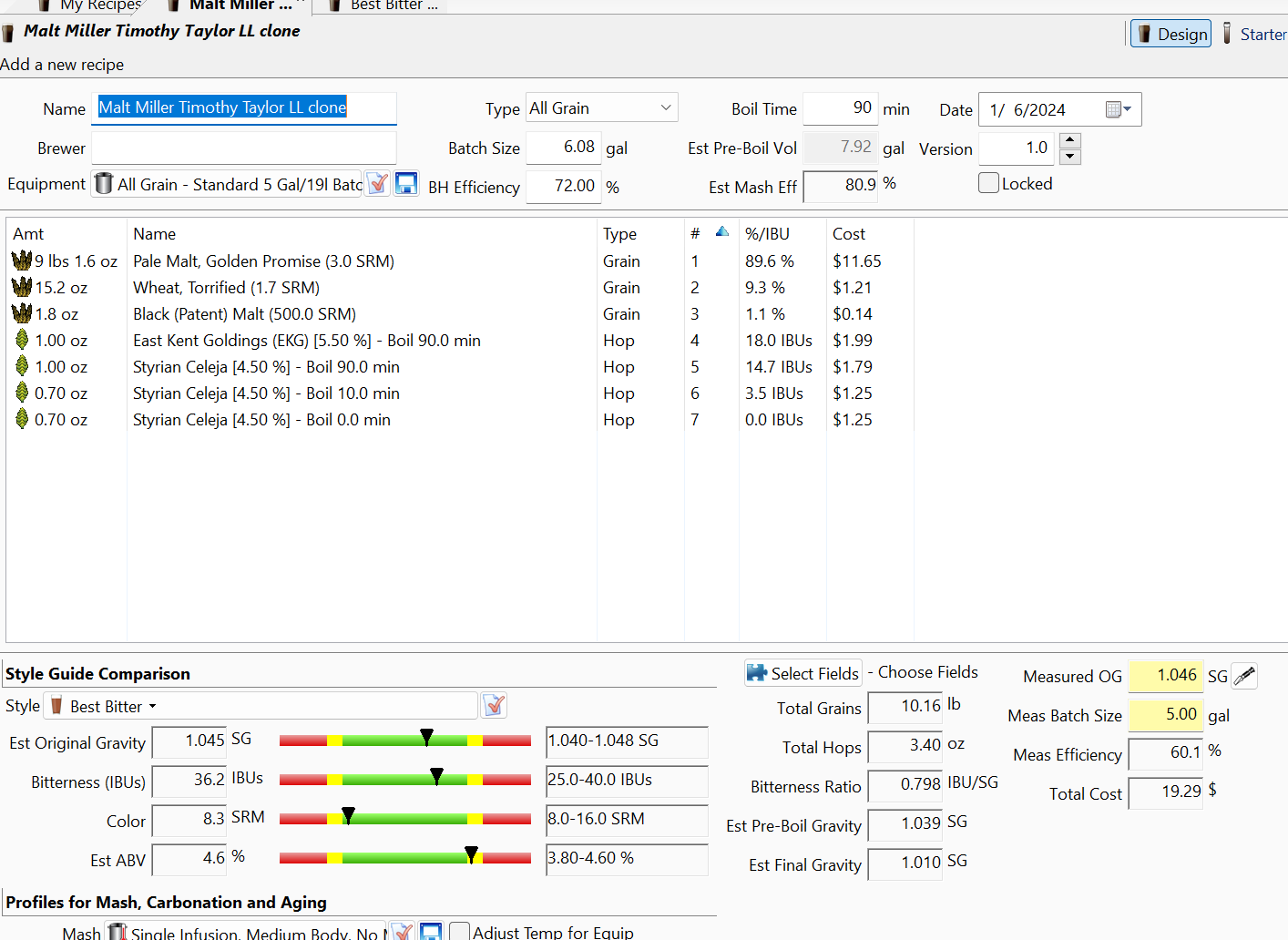Trying to work back in, and focusing on N. England ales. Pleased so far with the bitters I've brewed, though I'm now trying to dial in WP/steep utilizations and Beersmith - trying to parse IBU contributions when late hops go into a 30 minute stand, because if I go with what I'm seeing on paper at least, I'd have to eliminate bittering hops altogether at least in one recipe, and that can't be right. Just starting with the program and lots to learn. At any rate, another story.
I suspect there is no "general" to be applied, though perhaps there may be. Looking for some guidance on late hopping for flavor and aroma, and dry hopping rates, where applicable, for N. England ales, bitters in particular. I like a good balance of malt and bitterness - something in .82-.87 BU:GU, generally. And in terms of late hops, I'm looking for a discernable, pleasing nose and flavor, without being overwhelming or "American," for want of a way to better say it. Part of the story - if it's floral, it's there and blends almost indiscernibly well with the malt and yeast/fermentation aromas. If it means anything, something like the impression of crushed violets in certain Beaujolais, or earth or same, violets, in good Burgundy pinot.
Certain hops, like First Gold, in certain beers, like my strong bitter, I like a more definite quality. That orange marmalade....but for the most part, there, but fairly delicate.
I seem to recall - was it Timothy Taylor, or Fuller's?, big difference obviously, regionally - but the brewer saying 80% of the IBU contribution is from the boil, with 20% obviously being spread in late and dry hops. In terms of the goals stated above, any thoughts?
(PS. For that recipe mentioned in the first paragraph, see below - comparison of no bittering (challenger), with the feature accounting for WP/steep 30 min. enabled). You can see that with Challenger (bittering) set to zero, but the steep enabled, I'm getting a massive 1.123 BU:GU:

-and with it not enabled, and .4 oz. Challenger in the boil, I'm getting what I think is closer to reality .826 BU:GU. I should mention this is much closer to what I got in Promash:

I suspect there is no "general" to be applied, though perhaps there may be. Looking for some guidance on late hopping for flavor and aroma, and dry hopping rates, where applicable, for N. England ales, bitters in particular. I like a good balance of malt and bitterness - something in .82-.87 BU:GU, generally. And in terms of late hops, I'm looking for a discernable, pleasing nose and flavor, without being overwhelming or "American," for want of a way to better say it. Part of the story - if it's floral, it's there and blends almost indiscernibly well with the malt and yeast/fermentation aromas. If it means anything, something like the impression of crushed violets in certain Beaujolais, or earth or same, violets, in good Burgundy pinot.
Certain hops, like First Gold, in certain beers, like my strong bitter, I like a more definite quality. That orange marmalade....but for the most part, there, but fairly delicate.
I seem to recall - was it Timothy Taylor, or Fuller's?, big difference obviously, regionally - but the brewer saying 80% of the IBU contribution is from the boil, with 20% obviously being spread in late and dry hops. In terms of the goals stated above, any thoughts?
(PS. For that recipe mentioned in the first paragraph, see below - comparison of no bittering (challenger), with the feature accounting for WP/steep 30 min. enabled). You can see that with Challenger (bittering) set to zero, but the steep enabled, I'm getting a massive 1.123 BU:GU:

-and with it not enabled, and .4 oz. Challenger in the boil, I'm getting what I think is closer to reality .826 BU:GU. I should mention this is much closer to what I got in Promash:

Attachments
Last edited:











